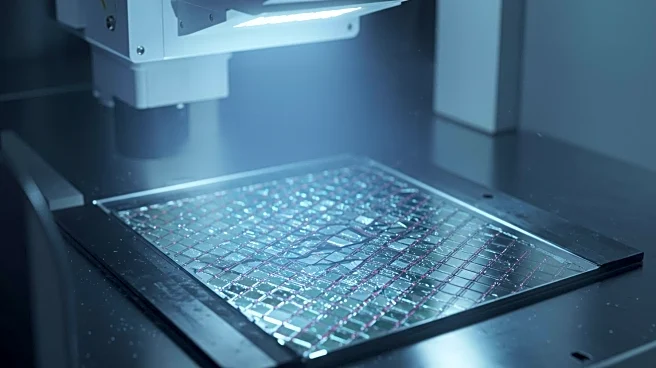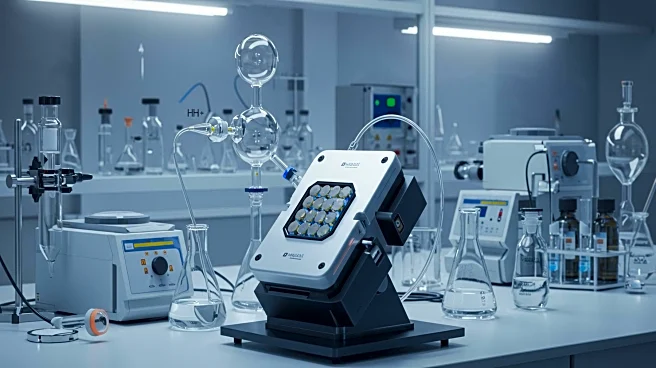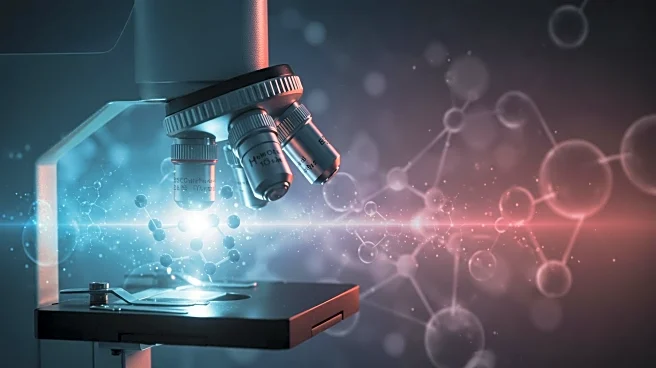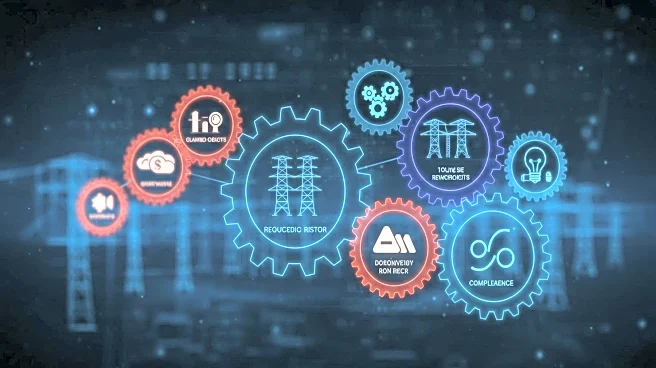What is the story about?
What's Happening?
Researchers have introduced a novel evaporation-induced cooperative assembly (EICA) approach for synthesizing ordered mesoporous metal oxides (OMMOs). This method allows precise control over the interactions between metal oxide precursors and amphiphilic block copolymers, optimizing the thermal treatment process. The EICA approach facilitates the creation of OMMOs with different framework compositions and pore sizes, which can be further modified through pore-wall engineering. The synthesis process, which takes approximately 3.5 days, does not require special expertise. Potential applications of these OMMOs include chemiresistive gas sensing and electrocatalytic hydrogen evolution reactions.
Why It's Important?
The development of this synthesis method is significant for industries relying on advanced materials, such as electronics and energy. OMMOs are valued for their high specific surface area and well-defined structures, which enhance their performance in applications like gas sensing and catalysis. The ability to precisely control the synthesis process and modify the material properties could lead to more efficient and cost-effective solutions in these fields. This advancement may also spur further research and innovation in material science, potentially leading to new technologies and applications.
What's Next?
The introduction of the EICA approach may lead to increased interest and investment in the development of OMMOs for various applications. Researchers and industries might explore further modifications and enhancements to the synthesis process, aiming to optimize the performance of OMMOs in specific applications. Additionally, collaborations between academic institutions and industries could accelerate the commercialization of these materials, potentially leading to new products and technologies in the market.
Beyond the Headlines
The ability to synthesize OMMOs with precise control over their properties could have broader implications for environmental and energy sectors. For instance, improved gas sensing capabilities could enhance air quality monitoring and pollution control efforts. Furthermore, advancements in electrocatalytic reactions could contribute to more efficient energy conversion processes, supporting the transition to renewable energy sources.
AI Generated Content
Do you find this article useful?











